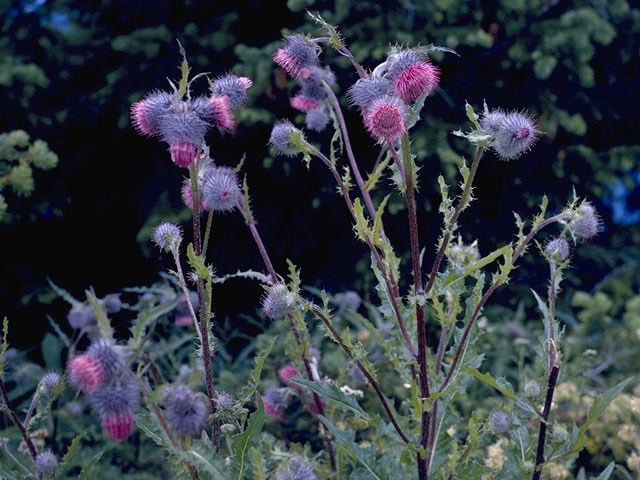Last updated: July 1, 2020
Article
Edible Thistles

Photo: Lady Bird Johnson Wildflower Center, The University of Texas.
Most thistles found in road ditches or along the edges of farm fields wouldn’t be appealing. But when writing about a variety of topics in his January 1806 journal entries, Captain Lewis explained that the local native people enjoyed the root of an edible thistle: “…it is from 9 to 15 Inces in length and about the size a mans thumb . . . . the consistence when first taken from the earth is white and nearly as crisp as a carrot; when prepared for uce by the same process before discribed of the white bulb or pashshequo quawmash, it becomes black, and is more shugary than any fuit or root that I have met with in uce among the natives;”
Edible Thistle, or Cirsium edule, is native to western North America, from southeastern Alaska south through British Columbia to Washington and Oregon. The leaves are very spiny and flower heads are pink. Plants frequently grow to five feet tall and prefer plenty of sun. In addition to the root, the stems are edible, when peeled. However, the thistle contains inulin, which gives some people digestive issues.
